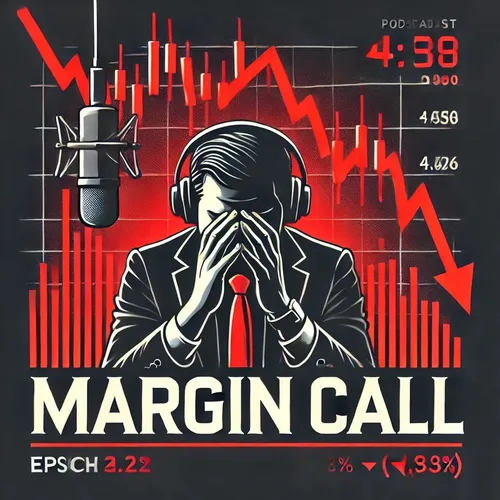Margin Calls and Short Squeezes: High-Stakes Risks in Volatile Markets
- Author
- Quiet. Please
- Published
- Thu 31 Jul 2025
- Episode Link
- https://www.spreaker.com/episode/margin-calls-and-short-squeezes-high-stakes-risks-in-volatile-markets--67199593
Margin calls and short positions are central concepts in trading, especially during volatile market conditions or sharp price movements. When traders want to amplify their exposure to a financial asset, they often use margin, which is essentially borrowing funds from a broker to control a larger position than they could with just their own cash. This leverage can magnify both gains and losses, making careful risk management vital.
A margin call happens when the value of a trader’s account falls below the broker’s required minimum due to losses sustained on open positions. At this point, the broker will contact the trader, demanding an immediate deposit of additional funds or liquidation of assets to restore the minimum margin level. Failure to respond to the margin call allows the broker to close out some or all of the trader’s positions automatically to protect against further losses. This process plays out in both stock and crypto markets, where sharp drops in price can lead to swift margin calls and forced liquidations.
Short selling adds another layer of risk to the margin call scenario. To initiate a short position, a trader borrows shares of a stock or units of another asset from a broker and sells them in the open market, aiming to buy them back later at a lower price to profit from the difference. However, if the price of the asset rises instead of falls, the trader must purchase shares at a higher price to close the position, resulting in a loss. Critically, because prices can climb indefinitely, potential losses on a short position are unlimited, unlike buying an asset, where losses stop at zero.
When markets move sharply against short sellers, their losses can accumulate rapidly. If the value of their margin account falls too low in relation to their outstanding short positions, a margin call is triggered. The trader must then quickly deposit more money or securities into the account. If that’s not possible, the broker may forcibly buy back the borrowed shares on the trader's behalf, locking in a loss at whatever the market price is at that moment. This dynamic often leads to what’s known as a “short squeeze.” During a short squeeze, rising prices force short sellers to buy back shares at ever-higher prices to cover their positions, further accelerating the price surge and compounding losses.
Short positions can become particularly vulnerable during periods of high volatility, unexpected news events, or coordinated market moves. High-profile examples have occurred when groups of retail traders collectively targeted heavily shorted stocks, rapidly driving up prices and trapping large institutional short sellers. This scenario can trigger a cascade of buying, with short sellers racing against each other to close their positions, intensifying the price move even further.
Effectively managing margin requirements and exposure in leveraged and short positions is crucial for any trader. Thorough risk management—such as setting clear position size limits, using stop-loss orders, and carefully monitoring market conditions—can help reduce the chance of being forced out of a trade by a margin call. However, even experienced traders are not immune to the dangers. Ultimately, the risks involved in short selling and using leverage mean it’s possible to lose more than the amount originally invested if the market turns sharply against a position.
Thank you for tuning in, and don’t forget to subscribe for more insightful content. This has been a Quiet Please production. For more, check out quietplease.ai.
For more http://www.quietplease.ai
Get the best deals https://amzn.to/3ODvOta
